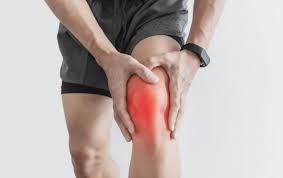How to Reduce Joint Pain that Gets Worse with Age? Adopt these Relief Measures
Our bodies change as we move through life, and joint pain is a frequent problem that many people experience as they become older. The quality of life for seniors may be greatly impacted by discomfort in the shoulders, knees, and other joints. But there are proactive measures that may be performed to keep joints healthy and go on leading an active and rewarding life. In this post, we’ll look at some crucial advice for maintaining healthy joints and making the most of your senior years.
Keep Up Your Exercise:
The preservation of joint health is greatly aided by regular physical exercise. Walking, swimming, and cycling are examples of low-impact workouts that assist to build stronger, more stable muscles surrounding the joints. As advised by health professionals, aim for at least 150 minutes of moderate activity every week. Before beginning any new fitness regimen, particularly if you have current joint problems, speak with a healthcare expert.
Keeping a Healthy Weight in Mind
Having too much weight strains the joints, especially the knees and hips, which carry the majority of the body’s weight. You may lessen the probability of experiencing joint pain and illnesses like osteoarthritis by keeping a healthy weight. Adopting a well-balanced diet full of nutrients and low in items that cause inflammation will benefit your general health as well as your joints.
Keep hydrated
Joint health depends on proper hydration because it keeps cartilage lubricated. Bones are kept from rubbing against one another by cartilage, which serves as a cushion between them. By consuming enough water throughout the day, you may help keep cartilage healthy and lessen friction in your joints.
Include foods that are good for joints:
Some foods have a reputation for helping to maintain joint health. Omega-3 fatty acids are anti-inflammatory and may help reduce joint discomfort. They are present in fatty fish like salmon and flaxseeds. Antioxidant-rich meals, such colored fruits and vegetables, may also help safeguard joints against oxidative stress.
Flexibility and range of motion should come first:
Regular flexibility training may improve joint mobility and reduce stiffness. To preserve flexibility and reduce joint pain, include yoga and mild stretching exercises into your everyday routine.
Keep Your Joints Safe:
Take safety measures while doing physical jobs or activities that might put stress on your joints to reduce the possibility of damage. When lifting large goods, use appropriate form, and to lessen joint stress, think about utilizing supporting equipment like knee braces or ergonomic tools.
Take Note of Your Body:
It’s important to pay heed to your body’s cues. It’s critical to take immediate action if you encounter ongoing joint pain or discomfort. Pushing through discomfort or ignoring it might cause more harm and consequences. For a precise diagnosis and suitable treatment choices, see a healthcare expert.
Comfortable Shoes:
The health of your joints may be greatly impacted by wearing well-fitting, supportive shoes, especially if you have weight-bearing joints like your knees and hips. Wearing the right shoes when walking or standing may assist preserve good alignment and lessen joint tension.
It takes a mix of physical exercise, a balanced diet, and thoughtful lifestyle decisions to maintain healthy joints as you age. You may maintain an active and rewarding lifestyle long into your elderly years by paying attention to these suggestions and taking a proactive approach to joint health. Remember, in order to ensure that you are taking the best possible care of your joints and general wellbeing, you must speak with a healthcare expert before making any substantial lifestyle changes.







